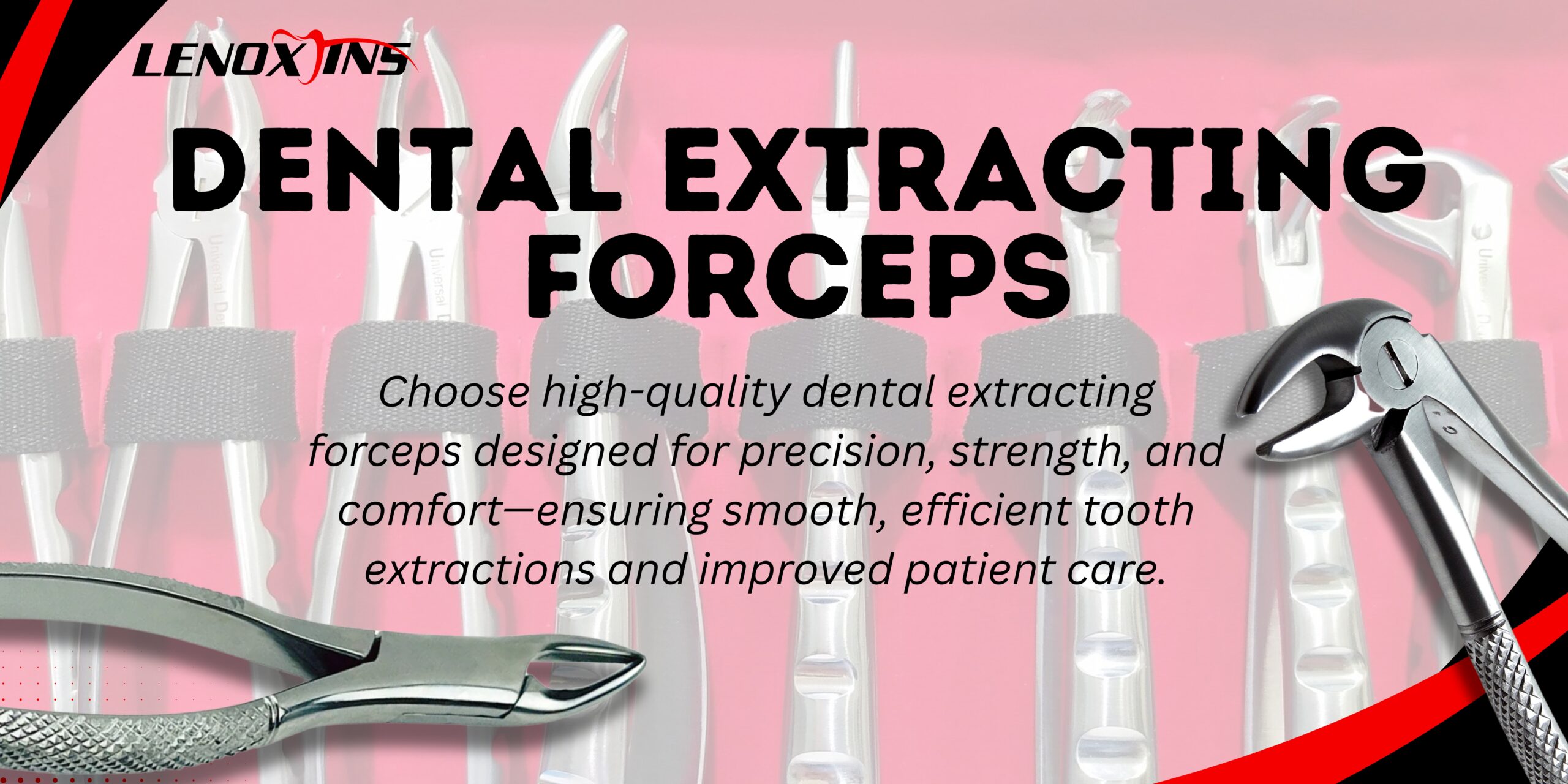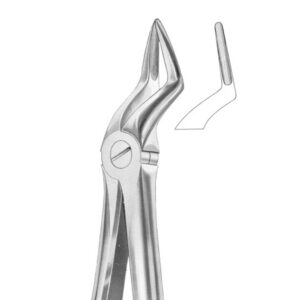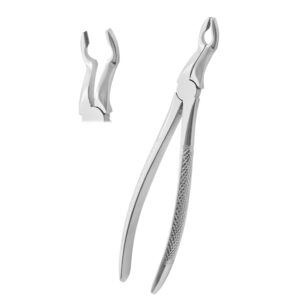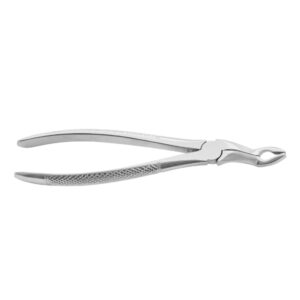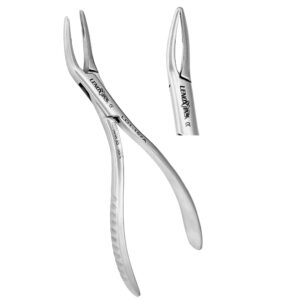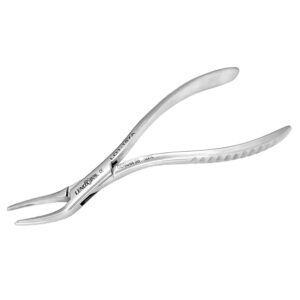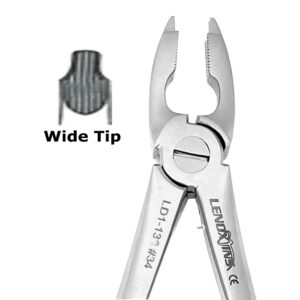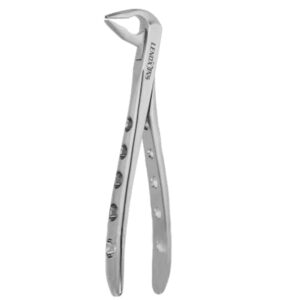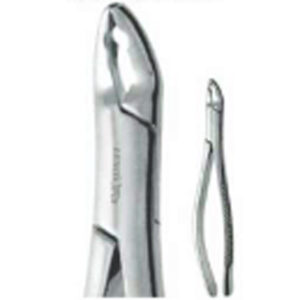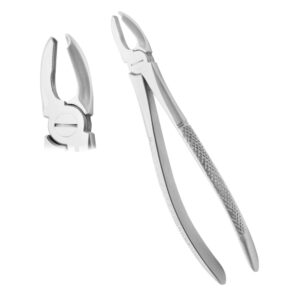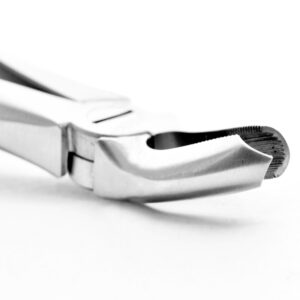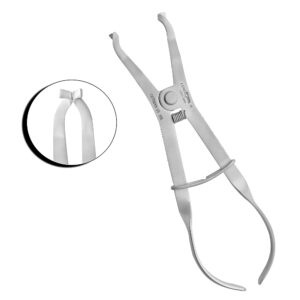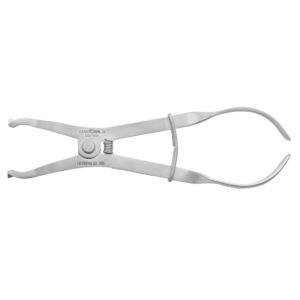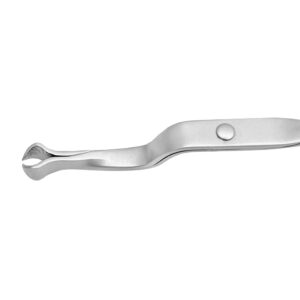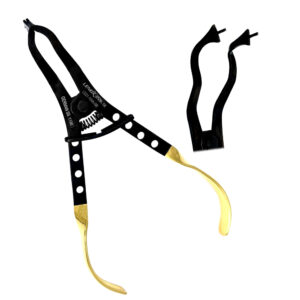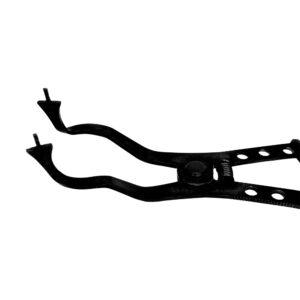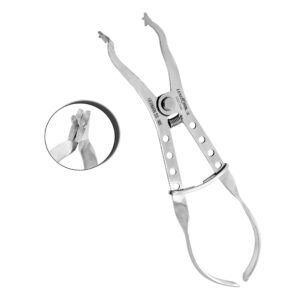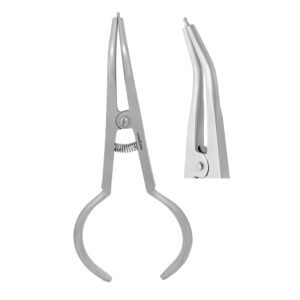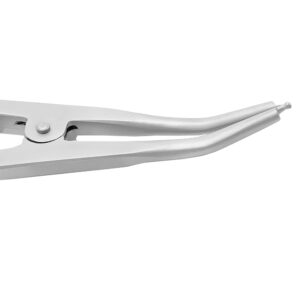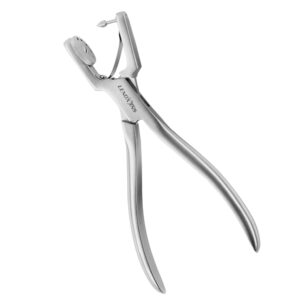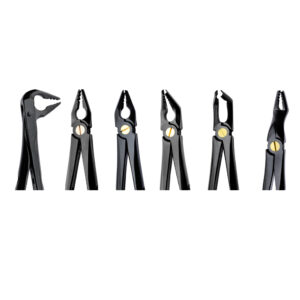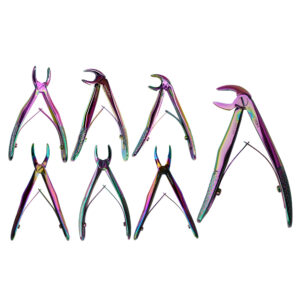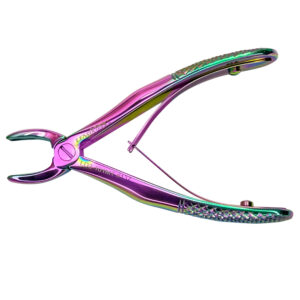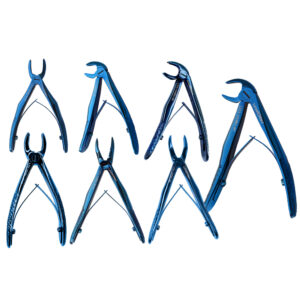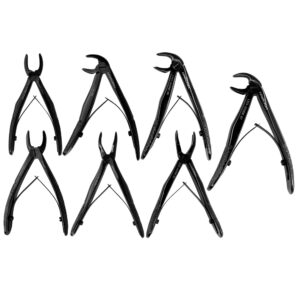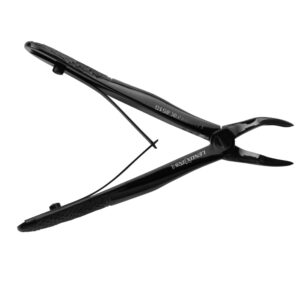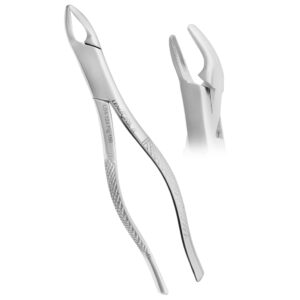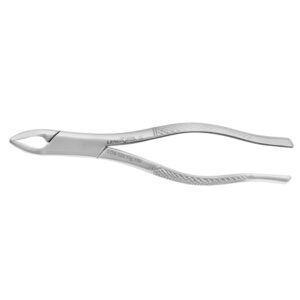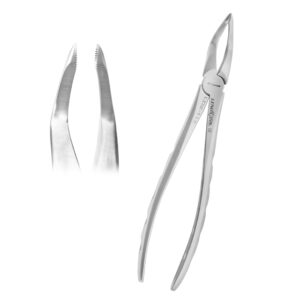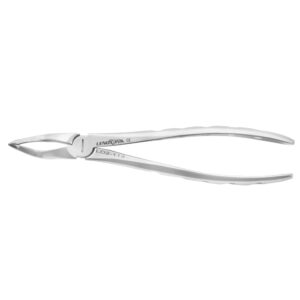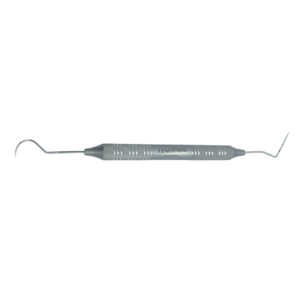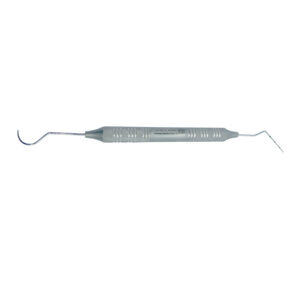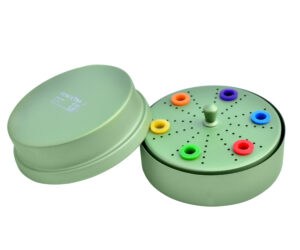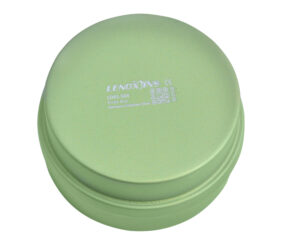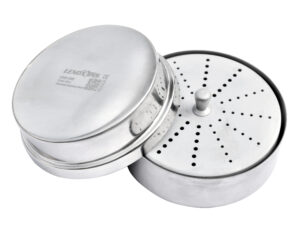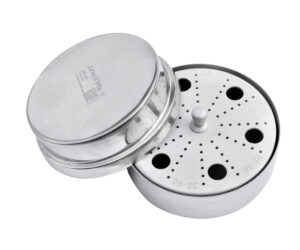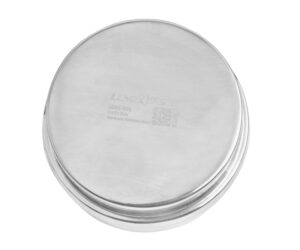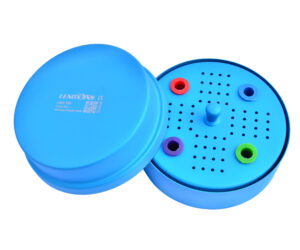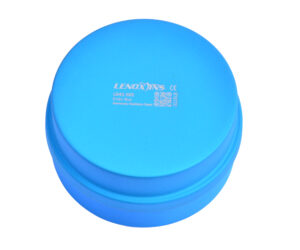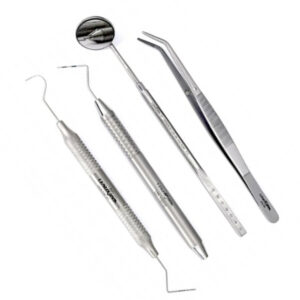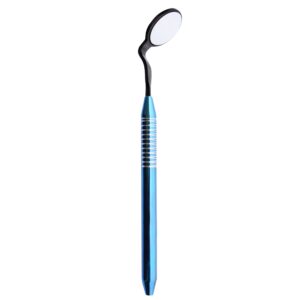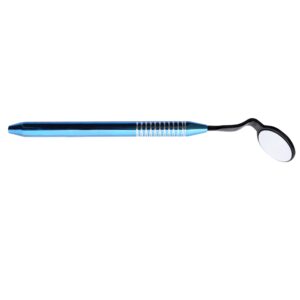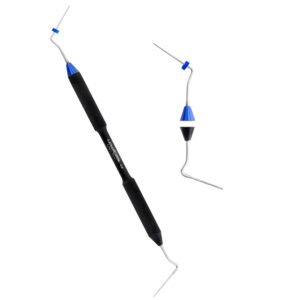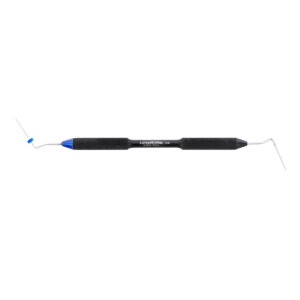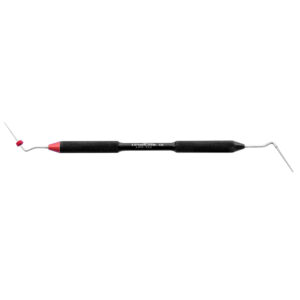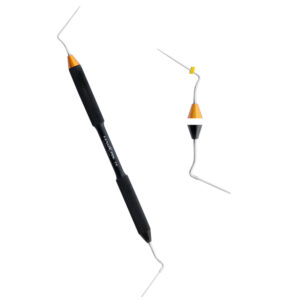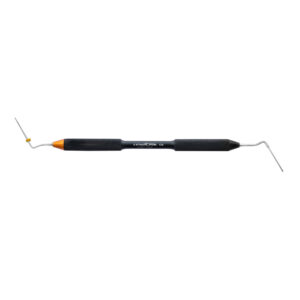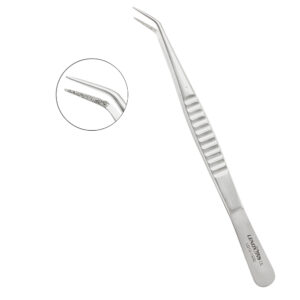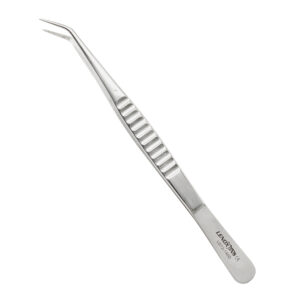Discover Premium Extraction Forceps for Dental Professionals
- Posted January 22, 2025
- by 104
Quality Dental Extracting Forceps for Effective Extractions
Quality dental extracting forceps are essential tools for successful extractions, yet many professionals face challenges in selecting the right ones. This article will cover key factors for choosing high-quality forceps, proper techniques for their use, and maintenance practices to ensure longevity and reliability. By reading this content, you will enhance your skills and knowledge, which can lead to more effective extractions and improved patient outcomes. If you struggle with achieving consistent success in dental procedures, the insights here will provide practical solutions to common issues, optimizing your use of dental extraction instruments in the process.
Select High-Quality Dental Extracting Forceps for Reliable Performance
Selecting high-quality dental extracting forceps is essential for achieving reliable performance during extractions. Understanding the different types of dental extracting forceps will help professionals choose tools suited for various procedures. Evaluating the materials used ensures durability while assessing design features promotes optimal functionality. This knowledge is vital for maintaining hygiene and enhancing outcomes, especially when utilizing tools like golden physics forceps or spatulas for graft procedures.
Understand the Different Types of Dental Extracting Forceps
In the realm of dentistry, various types of dental extracting forceps are essential for handling specific situations during extractions. For instance, molar forceps are designed with a broader angle at the tip to effectively grasp the larger teeth found in the back of the mouth. On the other hand, anterior forceps are typically slimmer, allowing for precision when extracting incisors or canines. The choice of forceps directly impacts the effectiveness of the procedure, making understanding these variations critical for dental professionals.
Dental Forceps
-
Extracting Forceps #51A Upper Roots – Premium Dental Surgical Instrument
Rated 0 out of 5CA$120Discover the Extracting Forceps #51A Upper Roots by Lenox Instruments. Designed for atraumatic upper root extractions with precision, durability, and ergonomic design. Trusted globally by dental professionals. Shop now! -
Extracting Forceps Fig. 67A Upper Third Molars – Premium Dental Surgical Instrument
Rated 0 out of 5CA$120Discover the Extracting Forceps Fig. 67A Upper Third Molars by Lenox Instruments. Precision-crafted for atraumatic upper third molar extractions. Durable, ergonomic, and professional-grade. Shop now! -
Extracting Forceps Fig. 62 Incisors, Premolars, Deciduous Teeth – Premium Dental Surgical Instrument
Rated 0 out of 5CA$120Discover the Extracting Forceps Fig. 62 Incisors, Premolars, Deciduous Teeth by Lenox Instruments. Crafted for precision and atraumatic extractions. Durable, ergonomic, and professional-grade. Shop now! -
Root Tip Pick Forceps Fig# 300A Upper Roots – Precision Dental Surgical Instrument
Rated 0 out of 5CA$120Original price was: CA$120.CA$60Current price is: CA$60.Discover the Root Tip Pick Forceps Fig# 300A Upper Roots by Lenox Instruments. Precision-crafted for atraumatic root tip extractions. Durable, ergonomic, and professional-grade. Shop now! -
Deep Gripping Forceps #34A Upper Centrals / Canines – Premium Dental Surgical Instrument
Rated 0 out of 5CA$120Discover the Deep Gripping Forceps #34A Upper Centrals / Canines by Lenox Instruments. Designed for atraumatic upper central and canine extractions with precision, durability, and ergonomic design. Trusted globally by dental professionals. Shop now! -
Extracting Forceps Fig. 174 Extra Narrow Lower Anterior Apical Retention Forceps – Premium Dental Surgical Instrument
Rated 0 out of 5CA$130Discover the Extracting Forceps Fig. 174 Extra Narrow Lower Anterior Apical Retention Forceps by Lenox Instruments. Designed for atraumatic lower anterior teeth extractions with apical retention. Precision-crafted, durable, and ergonomic. Shop now! -
Extracting Forceps Fig. 150 AS – Precision Dental Surgical Instrument
Rated 0 out of 5CA$120Discover the Extracting Forceps Fig. 150 AS by Lenox Instruments. Precision-crafted for atraumatic upper premolar extractions. Durable, ergonomic, and professional-grade. Shop now! -
Extracting Forceps Fig. 18 Upper Molars Left – Premium Dental Surgical Instrument
Rated 0 out of 5CA$120Discover the Extracting Forceps Fig. 18 Upper Molars Left by Lenox Instruments. Designed for atraumatic upper molar extractions on the left side with precision, durability, and ergonomic design. Trusted globally by dental professionals. Shop now!
Moreover, the materials used in crafting these tools play a significant role in their reliability and longevity. High-quality extracting forceps are often made of stainless steel, which provides resistance to corrosion and ensures they can withstand the pressures of rigorous use without degrading. Additionally, the use of well-designed grips enhances control, allowing practitioners to exert necessary force while minimizing the risk of damaging surrounding tissues. Recognizing these key aspects can lead to better outcomes, particularly when combining forceps with other instruments like needle holders or when securing wire for additional stability in complex extractions.
Evaluate Materials Used in Dental Extracting Forceps
When evaluating materials for dental extracting forceps, practitioners prioritize durability and performance. Stainless steel remains the preferred choice due to its resistance to corrosion and ability to withstand rigorous use. Moreover, the application of silicon grips on forceps provides enhanced comfort and control during extractions, significantly reducing the risk of slippage and ensuring precision when handling delicate procedures, such as using root tip forceps.
Another factor to consider is the integration of components like mirrors or syringes within the dental toolkit. High-quality extracting forceps often come equipped with designs that facilitate seamless use alongside these instruments, promoting efficiency and accuracy in various scenarios. This attention to material selection and thoughtful design ultimately supports better patient outcomes and enhances the overall effectiveness of extractions.
Assess Design Features for Optimal Functionality
Assessing design features of dental extracting forceps is vital for enhancing their functionality during procedures. For instance, titanium construction offers a lightweight alternative to traditional materials, providing strength without adding excessive weight. This can be particularly beneficial when dealing with upper molar forceps, where leverage and control are critical for effective extractions.
Incorporating specific features such as spoon-shaped tips or grooves can improve the grip on teeth and surrounding tissues. Additionally, having forceps that are compatible with other instruments, like curettes or amalgam carriers, allows for a more streamlined workflow in the dental office. Understanding these design elements helps practitioners select tools that not only perform efficiently but also promote patient safety and comfort during extractions.
Identify Key Factors for Choosing the Right Forceps
Determining the appropriate size and shape of dental extracting forceps is crucial for effective extractions, particularly for molar procedures. Evaluating comfort and grip enhances precision during delicate operations, ensuring better control for practitioners. Additionally, considering the reputation of manufacturers, such as those producing ash forceps dental, helps ensure quality and reliability. Each of these factors plays a significant role in achieving successful outcomes with tools like diamond and plastic forceps.
Determine the Appropriate Size and Shape for Extractions
Choosing the right size and shape of dental forceps is critical for successful extractions, particularly when handling molars or anterior teeth. For instance, 150 forceps are ideal for removing upper molars due to their design and wider profile that accommodates the shape of these teeth, while 88R forceps are more suited for lower molars, allowing for optimal grip and leverage during the procedure. Understanding these distinctions helps practitioners select the most effective tools, which can lead to smoother surgeries with reduced patient discomfort.
Incorporating tools like dental dams is essential for maintaining a clean working area during extractions. A dental dam provides stability and prevents contamination, enhancing the overall effectiveness of the surgical process. By ensuring that the appropriate size and shape of dental forceps are selected, dental professionals can not only improve their efficiency but also enhance patient outcomes through precise and safe extractions.
Evaluate Comfort and Grip for Enhanced Precision
Ensuring comfort and grip in dental extracting forceps is essential for maximizing precision during procedures such as crown extractions or sinus lifts. Forceps designed with ergonomically shaped handles enable practitioners to maintain a steady grip, preventing slippage and enhancing control, especially when navigating complex cases in orthodontics. When paired with materials such as textured wax on the grips, these tools provide added stability, allowing for a more confident approach to delicate extractions.
Practitioners must also consider how grip comfort impacts overall performance during procedures involving rongeurs or other associated instruments. A firm grip and comfortable design reduce fatigue during long procedures, thus contributing to better focus and outcomes. By prioritizing forceps that provide both comfort and efficient grip, dental professionals can significantly improve their effectiveness in achieving successful extractions while minimizing patient discomfort.
Consider Manufacturer Reputation for Quality Assurance
Choosing dental extracting forceps from reputable manufacturers is crucial for ensuring quality assurance in practice. Manufacturers known for their reliable stainless steel construction create tools that resist wear and corrosion, enhancing their longevity and performance during extractions. Professionals should analyze the reputation of these manufacturers, particularly those with proven track records in producing forceps that meet rigorous industry standards and utilize the latest physics principles in their designs for better ergonomics and efficiency.
Additionally, trusted manufacturers often have a menu of options that can include cotton and retractor configurations for various dental procedures. Their commitment to quality assurance assures practitioners that they are investing in tools designed for comfort and precision, benefiting both the operator and the patient. By selecting forceps from well-regarded sources, dental professionals can enhance their extraction procedures, reduce complications, and ultimately improve patient satisfaction.
Dental Forceps
-
Ring Applicator Forceps – Precision Dental Instrument
Rated 0 out of 5CA$60Discover the Ring Applicator Forceps by Lenox Instruments, a premium tool crafted for precision in dental ring application. Trusted by dental professionals in Canada, USA, UK, Australia, and Europe. -
Endodontic File Holder Forceps with Thumb-Lock – Precision Dental Instrument
Rated 0 out of 5CA$250Discover the Endodontic File Holder Forceps with Thumb-Lock by Lenox Instruments, a premium tool crafted for precision in handling endodontic files. Trusted by dental professionals in Canada, USA, UK, Australia, and Europe. -
Ivory Rubber Dam Clamps Applicator Forceps – Black Line Endodontic Instrument
Rated 0 out of 5CA$50Explore the Ivory Rubber Dam Clamps Applicator Forceps by Lenox Instruments, crafted with a straight head design and ergonomic handle for precision in rubber dam clamp placement. Trusted by dental professionals in Canada, USA, UK, Australia, and Europe. -
Ivory Rubber Dam Clamps Applicator Forceps – Precision Endodontic Instrument
Rated 0 out of 5CA$50Discover the Ivory Rubber Dam Clamps Applicator Forceps by Lenox Instruments, a premium tool crafted for precision in rubber dam clamp placement. Trusted by dental professionals in Canada, USA, UK, Australia, and Europe. -
Palmer Rubber Dam Forceps – Precision Endodontic Instrument
Rated 0 out of 5CA$50Discover the Palmer Rubber Dam Forceps by Lenox Instruments, a premium tool crafted for precision in rubber dam clamp placement. Trusted by dental professionals in Canada, USA, UK, Australia, and Europe. -
Separating Elastic Plier – Precision Orthodontic Instrument
Rated 0 out of 5CA$50Discover the Separating Elastic Plier by Lenox Instruments, a premium orthodontic tool crafted for precision in elastic separator placement. Trusted by orthodontic professionals in Canada, USA, UK, Australia, and Europe. -
Ainsworth Rubber Dam Punch Forceps – Precision Endodontic Instrument
Rated 0 out of 5CA$89Discover the Ainsworth Rubber Dam Punch Forceps by Lenox Instruments, a premium tool crafted for precision in rubber dam preparation. Trusted by dental professionals in Canada, USA, UK, Australia, and Europe.
Master Proper Techniques for Using Extracting Forceps
Preparing the patient for the extraction procedure is essential in endodontics, ensuring a smooth process while maximizing comfort. Following step-by-step methods for effective tooth removal, particularly for premolars, facilitates better access to the dental alveolus. Prioritizing patient safety during the entire extraction process reinforces best practices, making these techniques critical for achieving optimal outcomes.
Prepare the Patient for the Extraction Procedure
Preparing the patient for the extraction procedure begins with a thorough explanation of the process, including the use of tooth extraction instruments such as forceps and scissors. Ensuring that patients feel informed can help alleviate anxiety, making them more comfortable during the operation. Effective communication also includes discussing the importance of sterilization practices for all instruments, which is crucial in maintaining a clean environment and preventing infection.
Additionally, employing proper irrigation techniques during the procedure can enhance visibility and promote patient safety. The practitioner should ensure that all tools, including pliers and other extraction instruments, are readily accessible to streamline the workflow. Taking these preparatory steps contributes significantly to the overall success of the extraction, leading to smoother operations and improved patient satisfaction.
Follow Step-by-Step Steps for Effective Tooth Removal
Effective tooth removal begins with a careful assessment of the extraction site. Following a methodical approach, practitioners utilize a scalpel to incise surrounding tissue, which facilitates access and minimizes trauma to adjacent areas. Tools like the 222 forceps, known for their precise beak design, allow for firm yet gentle engagement of the tooth, ensuring a secure grip during the extraction process.
Once the extraction begins, the practitioner must apply controlled force using the appropriate forceps, such as the 88L forceps, designed for molar extractions. As the tooth becomes mobile, it is vital to maintain a clear view of the surgical field to avoid any complications. After completing the procedure, all instruments, including the autoclave sterilization of the forceps, are essential for maintaining hygiene and preventing postoperative infections.
Maintain Patient Safety During the Extraction Process
Maintaining patient safety during the extraction process is paramount. Effective use of dental instruments, particularly during the application of leverage, ensures that the tooth is removed with minimal trauma to surrounding bone and tissue. Practitioners must remain vigilant, monitoring the patient‘s response throughout the procedure to identify any signs of distress or complications promptly.
Prioritizing safety also involves employing careful techniques that prevent damage to adjacent structures. Proper positioning of the dental instrument facilitates controlled movements, reducing the risk of excessive force that could lead to injury. By ensuring a clear view of the extraction site, dental professionals can execute the procedure efficiently while safeguarding the patient‘s overall well-being.
Understand Maintenance Practices for Extracting Forceps
Regular maintenance practices for dental extracting forceps are essential to ensure optimal performance and safety during procedures. Cleaning and sterilizing steel instruments, including bayonet and hand forceps, help prevent infections. Additionally, inspecting forceps for wear and damage, especially root elevator types, guarantees their reliability. These practices are crucial for effective extractions and patient safety.
Clean and Sterilize Forceps to Prevent Infections
Cleaning and sterilizing dental extracting forceps is critical to preventing infections during procedures. After each use, tools such as physics forceps and chisels should be thoroughly cleaned with a suitable disinfectant to remove any organic material or debris. This practice minimizes the risk of cross-contamination, ensuring that patients remain safe during extractions, whether using traditional methods or advanced techniques like laser dentistry.
Regular maintenance of forceps also involves inspecting them for signs of wear, which can compromise their effectiveness. For example, eroded grips or bent tips can lead to reduced control during extraction procedures, posing potential risks. Practitioners should adopt a routine that emphasizes cleaning, sterilization, and thorough evaluation of tools, ensuring that every instrument, including those used alongside the tongue or other delicate tissues, operates optimally for effective extractions.
Inspect Forceps Regularly for Wear and Damage
Regular inspection of dental extracting forceps is essential for ensuring they remain effective and safe during procedures. Practitioners should look for signs of wear or damage, such as chipped edges or corrosion, which can compromise their functionality. Utilizing digital images can aid in identifying these issues over time, allowing for a clear comparison of the instruments’ conditions and ensuring consistent performance in extraction procedures.
Additionally, inspecting other extraction instruments, like hemostats and plaster molds, ensures overall reliability in the dental toolkit. Damaged forceps can lead to ineffective extraction efforts, impacting patient outcomes. Therefore, maintaining these tools in optimal condition is crucial for achieving successful extractions and enhancing the overall quality of dental care.
Dental Forceps
-
Deep Gripping Extracting Forceps Set of 6 – Premium Dental Extraction Instrument Kit
Rated 0 out of 5CA$900Discover the Deep Gripping Extracting Forceps Set of 6 by Lenox Instruments. Premium-quality stainless steel forceps designed for superior grip and precise dental extractions. Shop now for enhanced performance. -
Pediatric Extracting Forceps Set of 7 – Multi Titanium Coated Dental Surgical Instrument Set
Rated 0 out of 5CA$500Discover the Pediatric Extracting Forceps Set of 7 - Multi Titanium Coated by Lenox Instruments. Premium dental instruments for precise, efficient pediatric extractions. Shop now for quality and durability. -
Pediatric Extracting Forceps Set of 7 – Blue Titanium Coated – Premium Dental Surgical Instruments
Rated 0 out of 5CA$500Discover the Pediatric Extracting Forceps Set of 7 - Blue Titanium Coated by Lenox Instruments. Premium surgical toolset for precise pediatric dental extractions. Shop now for quality and durability. -
Pediatric Extracting Forceps Set of 7 – Black Titanium Coated – Premium Dental Surgical Tool Set
Rated 0 out of 5CA$500Discover the Pediatric Extracting Forceps Set of 7 - Black Titanium Coated by Lenox Instruments. Premium pediatric dental tools designed for precise and efficient extractions. Shop now for quality and durability. -
Apical Lower Universal Forceps Fig 151 – Precision Dental Surgical Instrument
Rated 0 out of 5CA$120Discover the Apical Lower Universal Forceps Fig 151 by Lenox Instruments. Precision-crafted for atraumatic lower tooth extractions. Durable, ergonomic, and professional-grade. Shop now! -
Apical Upper Universal Forceps Fig 150 – Precision Dental Surgical Instrument
Rated 0 out of 5CA$120Discover the Apical Upper Universal Forceps Fig 150 by Lenox Instruments. Precision-crafted for atraumatic upper tooth extractions. Durable, ergonomic, and professional-grade. Shop now! -
Bayonet Upper Roots Forceps – Micro Serrated Edges – Precision Dental Surgical Instrument
Rated 0 out of 5CA$130Discover the Bayonet Upper Roots Forceps - Micro Serrated Edges by Lenox Instruments. Precision-crafted for atraumatic upper root extractions. Durable, ergonomic, and professional-grade. Shop now! -
Root Tip Pick Forceps Fig# 300A Upper Roots – Precision Dental Surgical Instrument
Rated 0 out of 5CA$120Original price was: CA$120.CA$60Current price is: CA$60.Discover the Root Tip Pick Forceps Fig# 300A Upper Roots by Lenox Instruments. Precision-crafted for atraumatic root tip extractions. Durable, ergonomic, and professional-grade. Shop now!
Learn Tips for Enhancing Extraction Success Rates
Implementing effective anesthesia techniques before extractions enhances patient comfort and reduces anxiety. Communicating openly with patients further alleviates concerns, fostering trust within the dental setting. Utilizing advanced tools alongside extracting forceps, such as 151 forceps, ash dental forceps, and cowhorn forceps, ensures optimal results. These strategies are essential for improving extraction success rates and providing quality dental care.
Implement Effective Anesthesia Techniques Before Extractions
Implementing effective anesthesia techniques before dental extractions significantly enhances patient comfort and can lead to more successful outcomes. Providing a thorough explanation of the procedure, including the type of anesthesia to be used, alleviates anxiety and builds trust. For example, practitioners in Germany may combine local anesthetics with ultrasound-guided injections to ensure maximum efficacy, allowing for a more precise and less painful experience for the patient.
Additionally, having a well-organized first aid bag on hand can be crucial during extractions. This preparation enables practitioners to respond swiftly to any complications that may arise, enhancing safety and patient satisfaction. Effective use of anesthesia not only improves the extraction process but also fosters a positive environment in the dental practice, where patients feel cared for and respected throughout their treatment.
Communicate With Patients to Ease Anxiety and Concerns
Effective communication plays a key role in alleviating patient anxiety prior to surgical procedures, including extractions. Dental professionals can enhance the patient experience by thoroughly explaining each step of the process, addressing any concerns about the procedure or the use of tools, such as dental extracting forceps. Creating an open dialogue not only helps patients feel more comfortable but also builds trust between the practitioner and the patient, leading to a smoother extraction.
Additionally, practitioners can use practical examples to help patients understand the importance of specific instruments, such as a periodontal scaler or the role of anesthesia during the procedure. By expressing empathy and actively listening to patient concerns, dental professionals can provide reassurance. This approach ultimately contributes to a more positive experience, allowing for effective extractions while enhancing overall patient satisfaction.
Utilize Advanced Tools Alongside Extracting Forceps for Results
Utilizing advanced tools alongside dental extracting forceps significantly enhances the extraction process and improves outcomes. Instruments such as high-speed handpieces or ultrasonic scalers can aid in efficiently removing bone or tissue around the tooth, making the extraction smoother. This integration allows dental professionals to maintain a well-organized workflow, ensuring that every step of the procedure is executed with precision and care.
Furthermore, combining digital imaging tools can facilitate better visualization of the extraction site, helping practitioners plan their approach effectively. For instance, using cones or other imaging devices can guide the practitioner in determining the best angle and method for extraction. By effectively pairing these advanced tools with quality dental extracting forceps, practitioners can achieve optimal results and enhance patient comfort during the procedure.
Conclusion
Quality dental extracting forceps are crucial for achieving effective and safe extractions, significantly impacting patient outcomes. Understanding the various types, materials, and design features allows dental professionals to make informed choices that enhance performance and comfort during procedures. Prioritizing maintenance and selecting reputable manufacturers further ensures durability and reliability. By investing in high-quality tools and mastering proper techniques, practitioners can elevate their extraction practices and foster greater patient satisfaction.
More Dental Tools
-
Exprobes 23/15 UNC – Precision Diagnostic Instrument
Rated 0 out of 5CA$20Discover the Exprobes 23/15 UNC by Lenox Instruments, a professional dental instrument designed for efficient caries detection and periodontal assessment. Trusted by professionals in Canada, USA, UK, Australia, and Europe. -
Endo Organizer Box – Green – Premium Endodontic Instrument
Rated 0 out of 5CA$70Discover the Endo Organizer Box - Green by Lenox Instruments, a premium tool crafted to efficiently store and sterilize endodontic files. Trusted by dental professionals in Canada, USA, UK, Australia, and Europe. -
Endo Organizer Box – Premium Endodontic Instrument
Rated 0 out of 5CA$60Discover the Endo Organizer Box by Lenox Instruments, a premium tool crafted to efficiently store and sterilize endodontic files. Trusted by dental professionals in Canada, USA, UK, Australia, and Europe. -
Endo Organizer Box – Premium Endodontic Instrument
Rated 0 out of 5CA$60Discover the Endo Organizer Box by Lenox Instruments, a premium dental instrument crafted for precision in organizing and sterilizing endodontic files. Trusted by dental professionals in Canada, USA, UK, Australia, and Europe. -
Endo Organizer Box – Blue – Premium Dental Instrument
Rated 0 out of 5CA$70Discover the Endo Organizer Box - Blue by Lenox Instruments, a premium dental instrument crafted for precision in organizing and sterilizing endodontic files. Trusted by dental professionals in Canada, USA, UK, Australia, and Europe. -
3CH / 15 UNC Explorer Probe Double Ended – Premium Dental Surgical Instrument
Rated 0 out of 5CA$20Discover the 3CH / 15 UNC Explorer Probe Double Ended by Lenox Instruments. High-quality dental surgical instrument for precision diagnostics and periodontal evaluation. Durable, ergonomic, and versatile. Shop now! -
Basic Dental Exam Set – Includes 4 Instruments – Premium Dental Surgical Kit by Lenox Instruments
Rated 0 out of 5CA$70Discover the Basic Dental Exam Set - Includes 4 Instruments by Lenox Instruments. Premium stainless steel dental kit designed for precision diagnostics and durability. Ideal for dental professionals worldwide. Shop now! -
Dental Double Sided HD Black Mirror with Hollow Mirror Handle – Precision Dental Surgical Instrument
Rated 0 out of 5CA$30Discover the Dental Double Sided HD Black Mirror with Hollow Mirror Handle by Lenox Instruments. High-definition, glare-free dental mirror with lightweight ergonomic handle for precision diagnostics and procedures. Shop now! -
Root Canal Endo Explorer/Condenser Double Ended (0.5mm/1.0mm) – Precision Endodontic Instrument
Rated 0 out of 5CA$40Discover the Root Canal Endo Explorer/Condenser Double Ended (0.5mm/1.0mm) by Lenox Instruments, a premium tool crafted for precision in root canal exploration and material condensation. Trusted by dental professionals in Canada, USA, UK, Australia, and Europe. -
Root Canal Endo Explorer/Condenser Double Ended (0.3mm/0.6mm) – Precision Dental Surgical Instrument
Rated 0 out of 5CA$40Discover the Root Canal Endo Explorer/Condenser Double Ended (0.3mm/0.6mm) by Lenox Instruments. Premium stainless steel dental instrument for precise endodontic procedures. Durable, ergonomic, and versatile. Shop now! -
Root Canal Endo Explorer/Condenser Double Ended (0.4mm/0.8mm) – Precision Dental Diagnostic Instrument
Rated 0 out of 5CA$40Discover the Root Canal Endo Explorer/Condenser Double Ended (0.4mm/0.8mm) by Lenox Instruments. High-quality dental diagnostic instrument for precise endodontic examinations and treatments. Premium stainless steel, ergonomic design, and versatile use. Shop now! -
Cotton Pliers Diamond Dust Coated Fine Point – Precision Dental Surgical Instrument
Rated 0 out of 5CA$30Discover the Cotton Pliers Diamond Dust Coated Fine Point by Lenox Instruments. High-quality dental surgical instrument for precision handling during procedures. Premium stainless steel, ergonomic design, and versatile use. Shop now!

